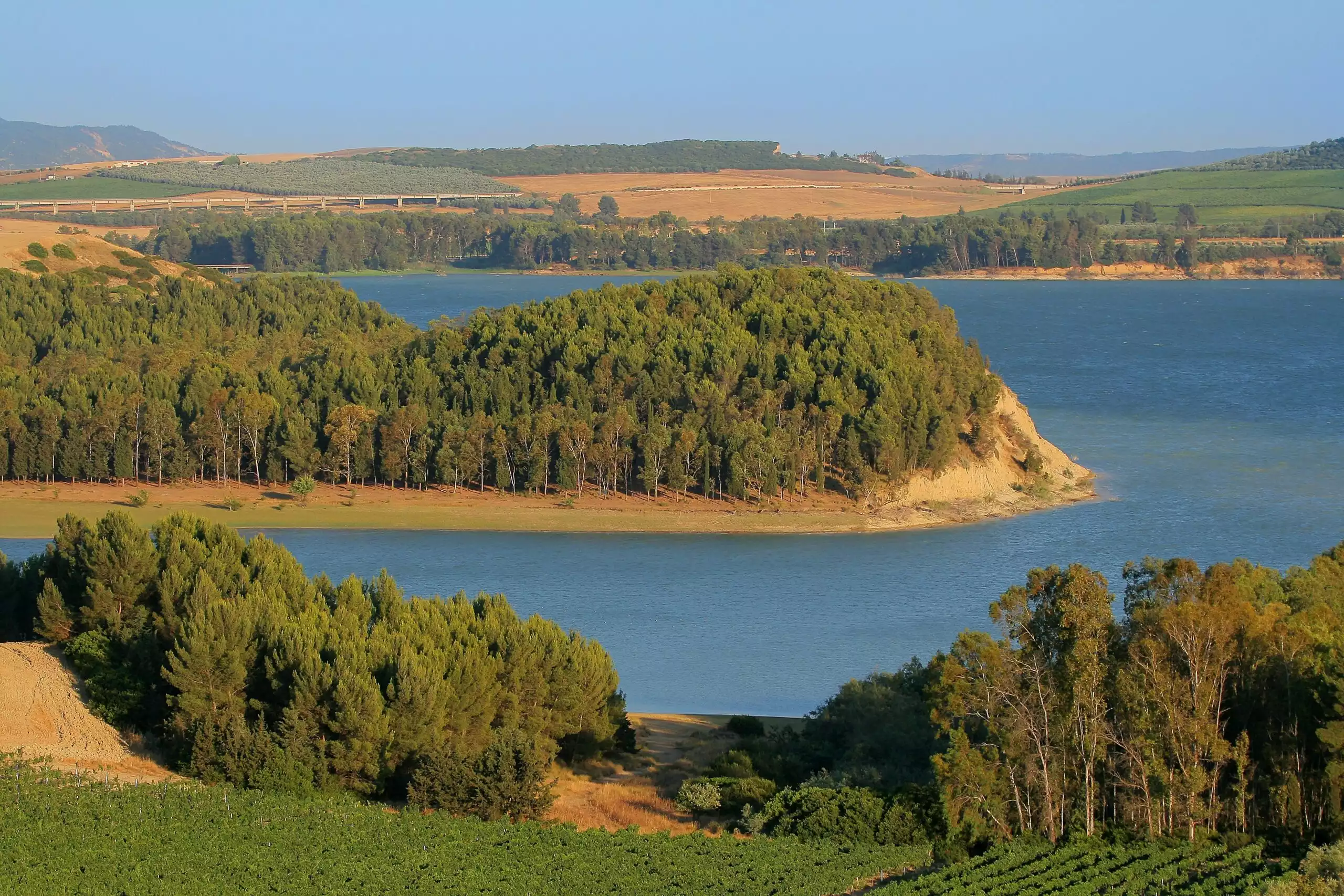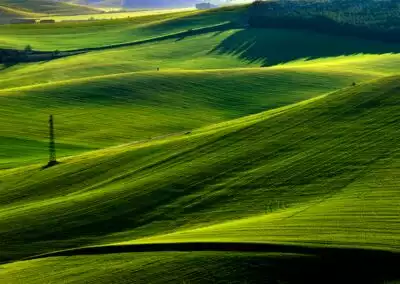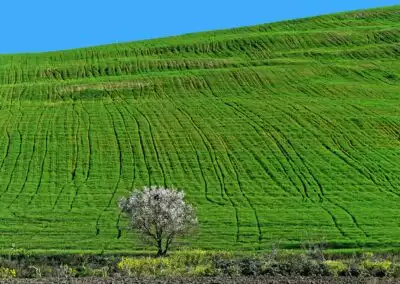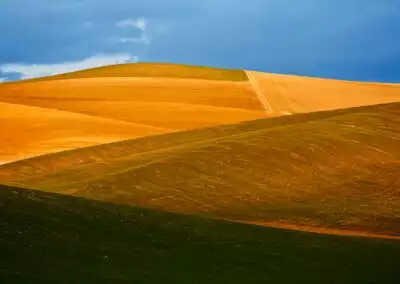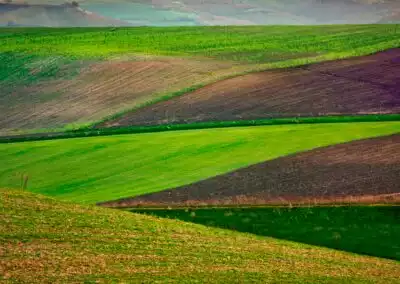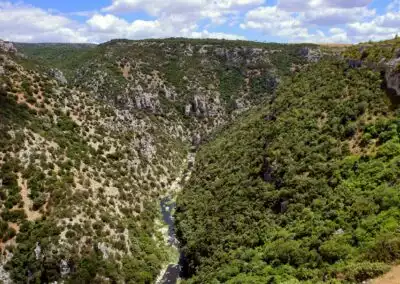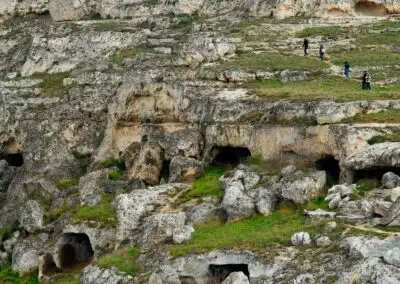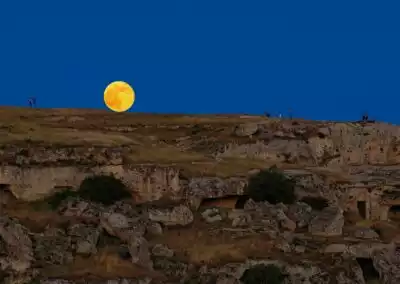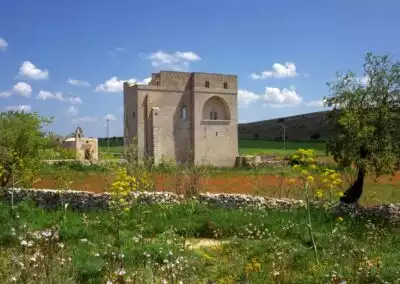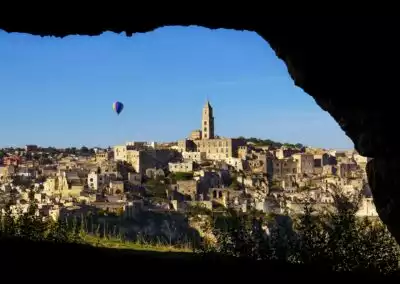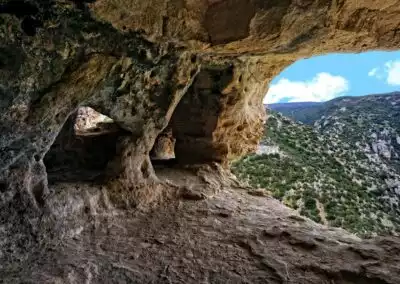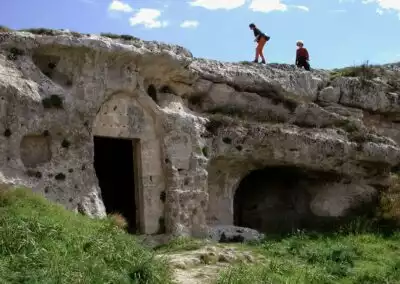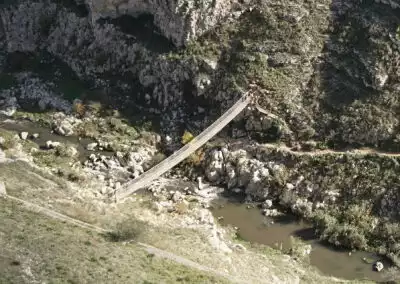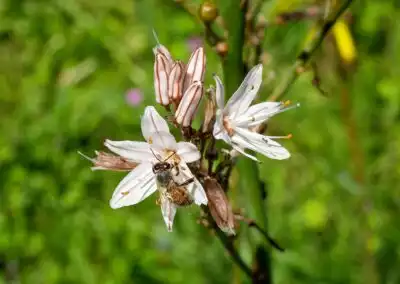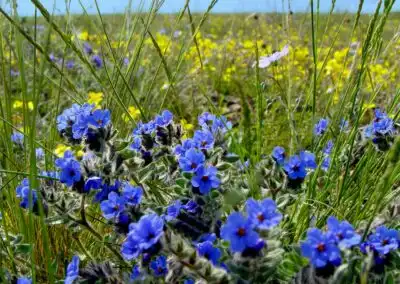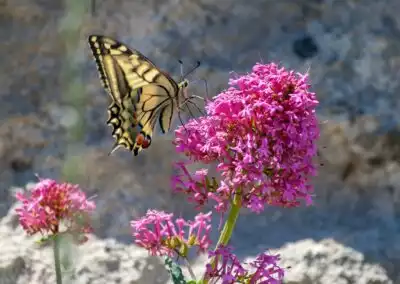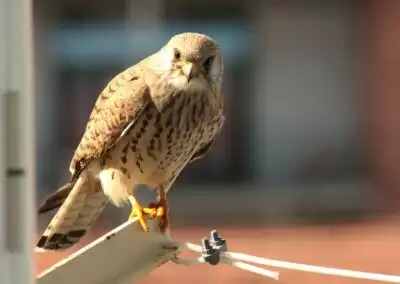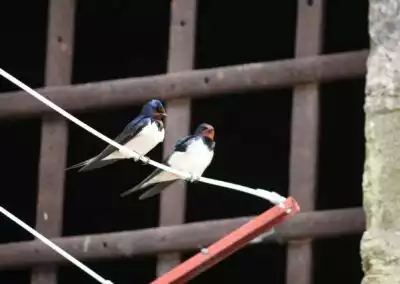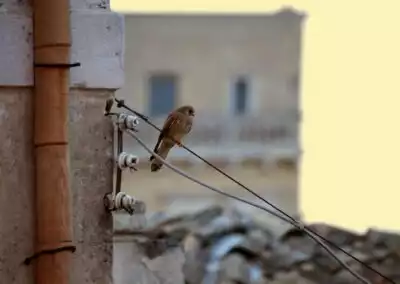Il Parco della Murgia Materana
Il Parco archeologico storico e naturale della Murgia e delle chiese rupestri del materano, fu istituito con legge regionale nel 1990. Si estende nella murgia materana per una superficie di circa 8000 ha, e comprende le gravine di Matera, di Picciano e del fiume Bradano. Percorrere a piedi la murgia e i costoni delle gravine è diventata un’attività sempre più usuale per quanti desiderano approfondire la conoscenza di questo ambiente meraviglioso. La murgia è uno scrigno prezioso di arte, storia e archeologia che contiene tesori nascosti in luoghi isolati che garantiscono a volte l’integrità dello stato di conservazione, a volte favoriscono purtroppo il degrado e l’abbandono. Grotte frequentate nel paleolitico, villaggi neolitici, casali e chiese rupestri, masserie fortificate, sono le attrazioni principali che spingono i visitatori a percorrere questi sentieri lontani dal frastuono della città. Le mille fioriture primaverili favoriscono le passeggiate naturalistiche, per fotografare fiori e piante tipiche dell’ecosistema murgiano, il birdwatching per l’osservazione di uccelli e rapaci, la mountain bike lungo sentieri stretti e panoramici che collegano i numerosi siti di interesse turistico, e il trekking con una guida del parco per scoprire gli angoli più suggestivi e conoscere la storia dei luoghi.
The San Giuliano Dam was built in the 1950s as part of the Marshall Plan, an American political and economic plan for rebuilding Europe after the Second World War. It is located on the Bradano River, the most important river in the Basilicata in terms of the extent of its river basin. The dam stores up to 107 million cubic metres of water and is managed by the Consorzio di Bonifica per l’irrigazione (Drainage and Irrigation Board) for the Metaponto area. Prime Minister Alcide De Gasperi inaugurated the initial works on the dam during his famous visit to the Sassi of Matera in July 1950. The dam was completed in 1958.Its location is shared among the municipalities of Grottole, Matera and Miglionico and it is a solid arch-gravity dam equipped with surface-water drains comprising five spillways, each 10m long. One of the dam’s distinctive features is its use of mobile steel sluice gates, designed for a maximum flow rate of 250 cubic metres per second, which can be admired from the manoeuvring bridge. The 314m long walkway on the dam’s crest allows the complex workings of the sluice gates to be observed.
Matera and the surrounding area boasts about a hundred rare or very rare plants and 23 endemic species, one of which, a variety of orchid, is dedicated to the city of Matera and is called ophrys exaltata subsp. mateolana. It is the ideal place for nature walks in the open air in search of rare trees, plants and flowers, deep within vegetation which is at times impenetrable. There are three habitats to be found: Mediterranean forest, Mediterranean scrub and garrigue or pseudo steppe. The Mediterranean forest comprises the last strips of the Municipal Woods and the Lucignano Woods, separated by the Vallone della Femmina. The woods are dominated by the fragno, a species of oak that in Italy only grows in the Murgia, with a scattering of holly oak and two species which are similar to downy oak – quercus amplifolia and quercus virgiliana – and commonly found in gorges. Several species of shrubs are associated with these trees such as prickly juniper, Phoenician juniper, mastic tree, Spanish broom, evergreen rose, terebinth, Montpellier maple, European nettle tree, European wild pear and mahaleb cherry. Amongst the flowering species of the undergrowth worthy of note are iris lorea, wild saffron, butcher’s broom, Neapolitan cyclamen, wild asparagus, wild peony, ovate goatgrass and scorzonera. Clearings abound with euphorbia apios, red squill, winter savory and silver sage, the latter being a plant that is quite rare in nature. On the edges of the woods, strips of vegetation typical of Mediterranean shrub and garrigue or pseudo steppe grow. The most extensive areas of Mediterranean shrub are around Cristo La Selva, Murgia Sant’Andrea, Vallone della Femmina and Vallone del Prete, with an abundance of juniper, mastic tree, terebinth, broom, phillyrea, wild olive and Italian buckthorn, rarely associated with carob, myrtle and strawberry tree. Garrigue is the most advanced stage of vegetation degradation and makes up the most extensive environment of the park. Typical of garrigue are fields of branched asphodel, stipa austroitalica martinovský, horehound and giant fennel, which are associated with Montpellier rock-rose, hairy rock-rose, sage leaf rock-rose, thymus spinulosus, anthemis hydruntina, Greek oregano, mullein, milk thistle, basil and yellow asphodel. Whilst in the canyons, rock vegetation which favours rocky substrates can be found, such as campanula versicolor, also known as Matera campanula or campanula Pugliese, carum multiflorum, red valerian, felty germander, caper, centaurea japygica, dianthus garganicus and the rare Portenschlagiella ramosissima. The many orchids of the park deserve special mention, amongst them: giant orchid, orchid, long-lipped serapias, three-toothed orchid, Bertoloni’s bee orchid, ophrys pugliese, yellow bee orchid, black spider orchid, late spider orchid, bumblebee orchid, sombre bee orchid and sawfly orchid, in addition to the aforementioned ophrys mateolana. Amongst the woody species that grow along the banks of the waterways we can note European field elm, white willow, white poplar, tamarisk and privet.
The walls of the canyons are full of fissures, which are perfect nesting sites for birds. A bird that is closely tied to the rupestrian habitat is the winter wren, a passerine which nests in the nooks and crannies of manmade caves. This small bird has a melodious song and feeds on insects, caterpillars, worms and small spiders that it finds in the Mediterranean shrubs located near waterways. It would not have adapted to living in the canyons had it not found an artificial, manmade rupestrian environment. Another passerine that inhabits the canyons is the raven, one of the largest in the corvid family. It prefers to feed on insects, amphibians, reptiles, small mammals and animal carcasses. Other passerines which nest in the park are the blue rock thrush, recognised by its long, thin beak, cobalt blue body and black wings, which nests in the natural cracks in the rock faces. Then there is the Cetti’s warbler, which is really quite similar to the winter wren, but larger, and spends its time in shrubs near waterways, nesting amongst the branches of willows. Also present are the Eurasian blackcap, which nests in Mediterranean shrub and in woods, the European goldfinch, which mainly feeds on the seeds of Fuller’s teasels, and the swallow, which nests under the roof tiles of houses in the Sassi and under the roof cornices of houses in the city. Belonging to the bucerotiform family is the Eurasian hoopoe with its long beak and distinctive plumage, a bird that nests in the dry-stone walls of the Murgia and in trees. One of the most striking birds is surely the European roller, which has a turquoise breast and brown feathers with emerald green tips on its back. The smallest of the birds of prey is the lesser kestrel, which nests under the roof tiles of houses in the Sassi and whose habitat also includes the pseudo steppe of the Murgia and the uncultivated land of the park, where it feeds on insects, especially crickets. This is why it became the symbol of the Murgia Materana Natural Park. Other raptors which can be seen in the Murgia and the surrounding hills are the common buzzard, similar to a small eagle but with a wide rounded tail, the short-toed snake eagle, the red kite, the black kite, the lanner falcon and the common kestrel. Amongst the larger birds of prey that deserve a special mention is the white scavenger vulture, also known as the Egyptian vulture. With a wingspan of one hundred and sixty-five centimetres it is the smallest European vulture. It prefers open areas, feeds on animal carcasses and, like the European roller and the lesser kestrel, it overwinters in Africa to return in spring. Worthy of note amongst the nocturnal raptors which hunt rodents and insects are the barn owl, the little owl, the tawny owl and the Eurasian eagle-owl. The latter, with a wingspan of almost two metres, is the largest in Europe.
